By TREVOR HOGG
Images courtesy of Robert Stromberg.
By TREVOR HOGG
Images courtesy of Robert Stromberg.

Robert Stromberg, Director, Production Designer and Visual Effects Specialist.
Described as a creative visionary, Robert Stromberg has traveled to Pandora with James Cameron, gone down the rabbit hole to Wonderland with Tim Burton, sailed to the far side of the world with Peter Weir and had his own personal encounter with villainess Maleficent. The journey has led to two Oscars, five Emmy Awards and the establishment of The Virtual Reality Company, which produced the Jurassic World VR Expedition.
Life in Carlsbad, California was a mixture of surfing and sketching for Stromberg who had a great admiration for his father. “My dad was always sketching out new and exciting fantasy worlds filled with strange creatures; he wanted to be the next Cecil B. DeMille.” Partnering with the elder Stromberg was an 18-year-old neighbor. “Sometime in the late ‘60s, my dad and Phil Tippett began creating low-budget monster films in our garage. One of these films was a version of a Ray Bradbury short story called “The Sound of Thunder.” Shot in 16mm, they built small sets, made costumes and filmed in the woods in and around Carlsbad. Then, back in our garage they created miniature sets with painted plaster cliffs, model railroad trees and bushes. They also built fully articulated dinosaur puppets for stop-motion animation, a la Ray Harryhausen and Willis O’Brien. As a kid, I learned so much about the process just hanging around them. Another stroke of luck for me was when retired Disney artist Bruce McIntyre, who had once created pencil drawings for Pinocchio, Snow White and a lot of the Disney animated films, relocated and became my elementary school art teacher; he would roll in a reel-to-reel videotape player and place it in front of the class. At some random point, Bruce would pause the show leaving just one frame frozen on screen and then ask us all to draw that image. It was a great lesson for me in learning how to find and draw emotion into simple characters.”
A documentary on matte artist Albert Whitlock, who was brought over to America by Alfred Hitchcock, made Stromberg want to pursue the same profession, and a treasured gift from his father was a book on the making of the original King Kong. “Those images made a big impression and became an inspiration for the jungle of Pandora in Avatar, which I co-produced and designed with Rick Carter,” Stromberg says. “When it came to what Ray Harryhausen was doing, we just thought that was amazing. To this day, my brother and I still talk about the skeleton fight in Jason and the Argonauts.” At the age of 19, Stromberg moved to Los Angeles and worked in the tollbooth in the parking lot at Universal Studios. “I was fired for drawing on the job, which turned out to be fortunate because it allowed me to get a production assistant job on a sitcom called Family Ties with Michael J. Fox. My first ‘illustrious’ PA job was to sweep out an entire auditorium that was filled with a layer of dust, which I’ll never forget!
Sketches by Marcel Delgado of Skull Island for the original King Kong became the inspiration for Stromberg’s jungle of Pandora.

A documentary on matte artist Albert Whitlock, who was brought over to America by Alfred Hitchcock, made Stromberg want to pursue the same profession.

Stromberg, left, was greatly influenced by his father William Stromberg, center.

Stromberg gets to spend some quality time with Peter Jackson, Steven Spielberg and James Cameron.
One of the producers on the project realized that I had worked all night and said, ‘Hey, kid, I like your work ethic. What do you want to do in this business?’ I told him that I was going to be a great matte artist in film one day. He asked me to show him what I had and was blown away. A few weeks later I found myself creating matte paintings for Journey to the Center of the Earth. After that, I went on to work on other films like A Nightmare on Elm Street and many other low- budget horror films.
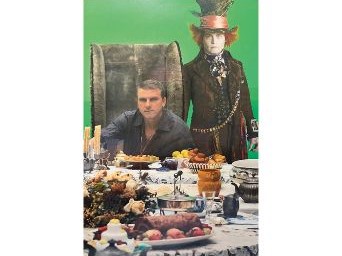
Stromberg joins Johnny Depp for a feast during the shoot of Alice in Wonderland.

Stromberg and Rick Carter partnered together to bring Pandora to cinematic life for James Cameron.
Mostly, I stumbled into everything along the way and simply had to figure it out. One day when I was working on a very complex shot for a movie, Syd Dutton and Bill Taylor came to see me. Little did I know that they had a company called Illusion Arts and were once the artistic and technical team at Universal Studios under Albert Whitlock. Syd and Bill saw what I was doing and instantly offered me a full-time job at their studio. Syd took me under his wing and gave me great opportunities. I was fortunate enough to win my first Emmy for the TV series Star Trek: The Next Generation. Dutton and I created all the cities for not only Star Trek: The Next Generation but also Deep Space Nine and Voyager.”
After a year of dealing with a life-threatening diagnosis, Stromberg decided to establish his own company, Digital Backlot. “I was bidding on work that Industrial Light & Magic or Digital Domain were bidding on and winning those jobs.

Illusion Arts co-founders Bill Taylor and Syd Dutton talk to Stromberg about matte painting for a Michael Jackson music video.
Stromberg shared his first Oscar with Rick Carter and Kim Sinclair for their art direction on Avatar.
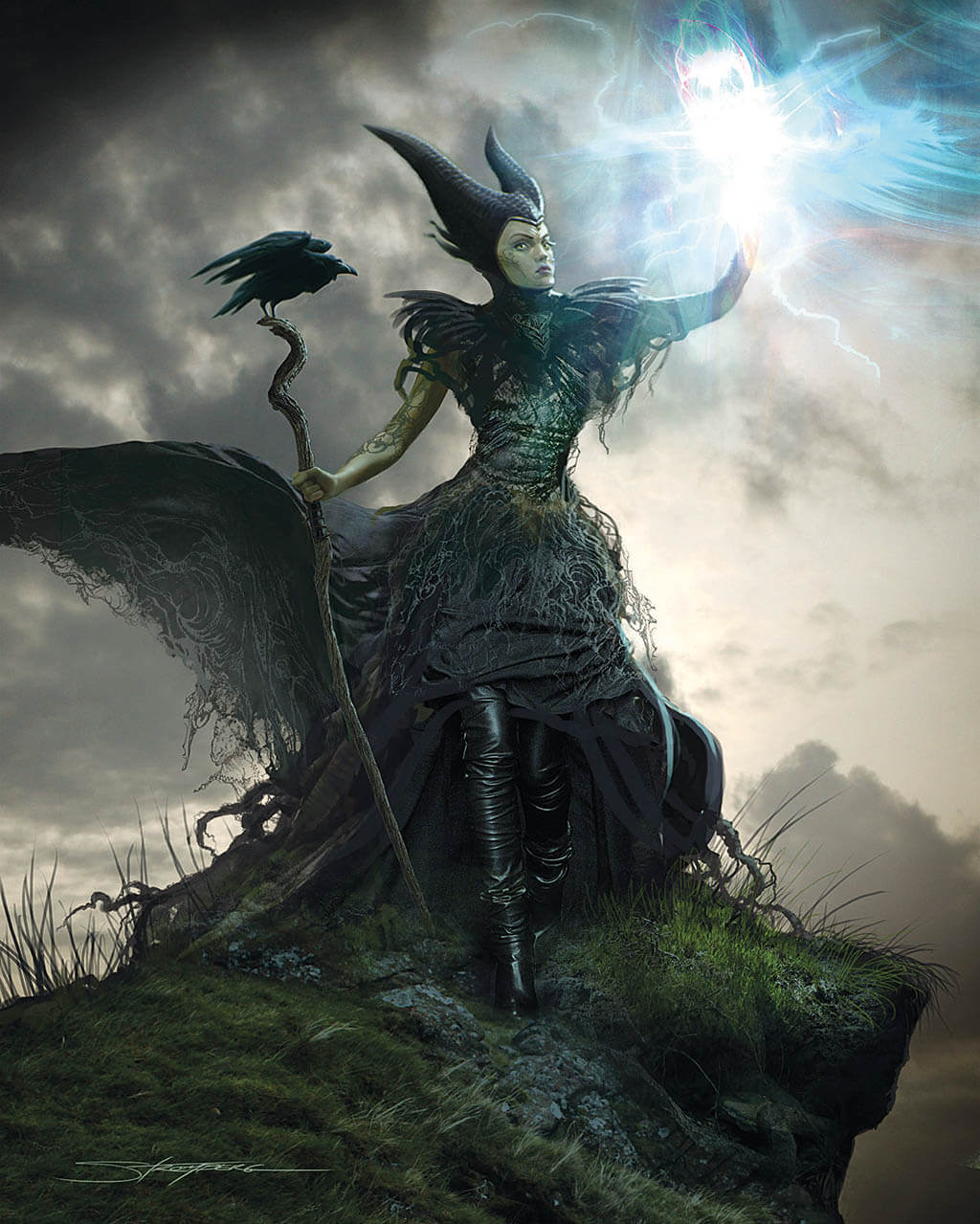
Maleficent provided Stromberg with the opportunity to fulfill his ambition of becoming a feature film director.
I ended up becoming a full-time visual effects supervisor and traveled the world on many projects, including Game of Thrones, Walk the Line, Memoirs of a Geisha, John Adams and Boardwalk Empire but I was still looking for something more. I wanted to be a director. Along the way, I met many directors, including Martin Scorsese, Steven Spielberg, Peter Jackson and Steven Soderbergh. In 2003, I met Peter Weir, and we worked together on a film called Master and Commander: The Far Side of the World. I watched how Peter directed not just the actors but the crew and how he handled himself under pressure. I remember telling myself that was the type of director I wanted to be.”
Continues Stromberg, “A few months later I received a call out of the blue from James Cameron. At that time, it was called Project 880, not Avatar. After the call, I created an image of a small character looking over a vista near these giant trees with plants and floating mountains.” The concept art was enthusiastically received by Cameron. “The first year, we decided to only do images in black and white, and James understood why I wanted to do this. We needed to see and feel the graphic depth of this world before we added color. This all goes back to my early fascination with a black-and-white film and directors of photography like James Wong Howe. It was important to understand the concept because we were making a stereo 3D film, and depth was a crucial part of the viewing experience. Ultimately, I spent nearly five years as a co-production designer with Rick Carter, assembling a team of artists where we created every plant, tree and creature on Pandora. What a ride!” Avatar also provided an opportunity for Stromberg to collaborate with producer Brooke Breton, who has been a major influence.


After completing principal photography at Pinewood Studios, over 100 matte paintings were created by Stromberg for Maleficent in post-production. Stromberg on set with Angelina Jolie.
Transitioning to directing was not a big leap. “Simply put, I always felt that I was already directing, no matter what position I held,” Stromberg notes. “I worked on several films with producer Joe Roth, who recognized while I was production designing the film Oz the Great and Powerful that I wasn’t just designing the film, I was also guiding the Disney executives through the process; he could see that I had a great rapport and dialogue with the director, Sam Raimi, the crew and actors. One day, Joe came to me and handed me a script that Tim Burton had recently turned down. We filmed Maleficent at Pinewood Studios in London, and immediately I realized that all my years of experience, whether it be visual effects, matte painting, supervising or production design, made it easy for me to communicate on all aspects of the filmmaking process. James Cameron taught me discipline, Steven Spielberg showed me that things could evolve or adapt in the moment, Tim Burton showed me that you shouldn’t be afraid to push the creative wall, and most importantly, Peter Weir showed me that you could direct with respect and humanity.” The lessons learned from being a matte artist still resonate today. “One was to have the feeling of complete control over creative design for at least several shots in a movie. What I mean by this is that since I was the specialist hired to do the job of creating an illusion that fit like a glove into one of the scenes, it taught me to understand the totality of a sequence and how the shots that I created needed to fit seamlessly into that scene. It also allowed me to understand what I needed to do to create something that fit the emotional narrative of that moment in the film.”
In many ways visual effects can be viewed as a magic trick. “The end goal is to create something that fools or entertains the audience,” Stromberg states. “Filmmaking in general is all an illusion. Sometimes I still wonder how it all comes together with so many moving parts. It’s a lot like a symphony and all the different musical instruments coming together, hopefully without a few bad notes.”

Alice in Wonderland led Stromberg to win his second Oscar for Achievement in Art Direction along with Karen O’Hara.

With Alice in Wonderland, Stromberg learned quickly that the designs needed to be pushed to almost comical proportions.

Stromberg and Syd Dutton created all the cities for not only Star Trek: The Next Generation but also Deep Space Nine and Voyager.
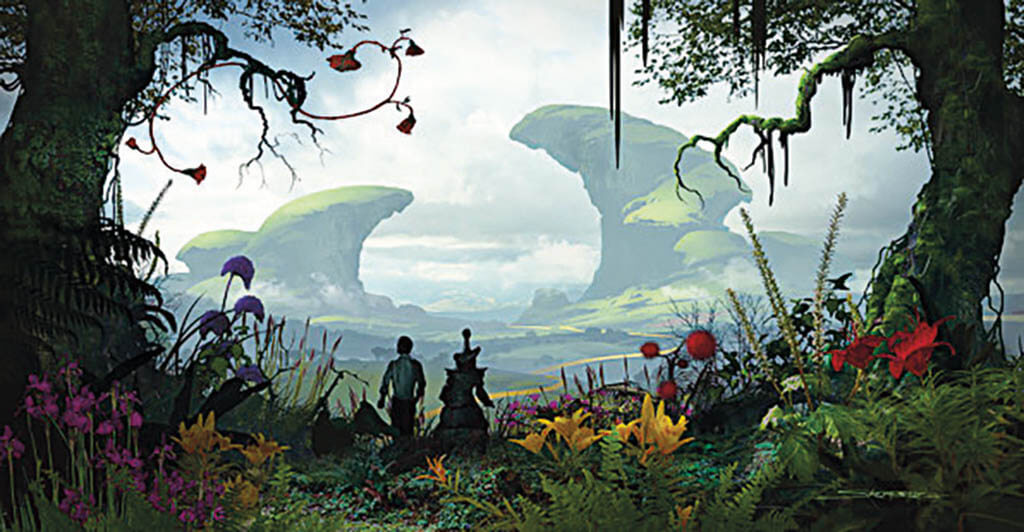
Along with designing Oz the Great and Powerful, Stromberg guided Disney executives through the process.

Stromberg believes that filmmaking is an illusion with visual effects being a part of the magic trick, as demonstrated by Oz the Great and Powerful.
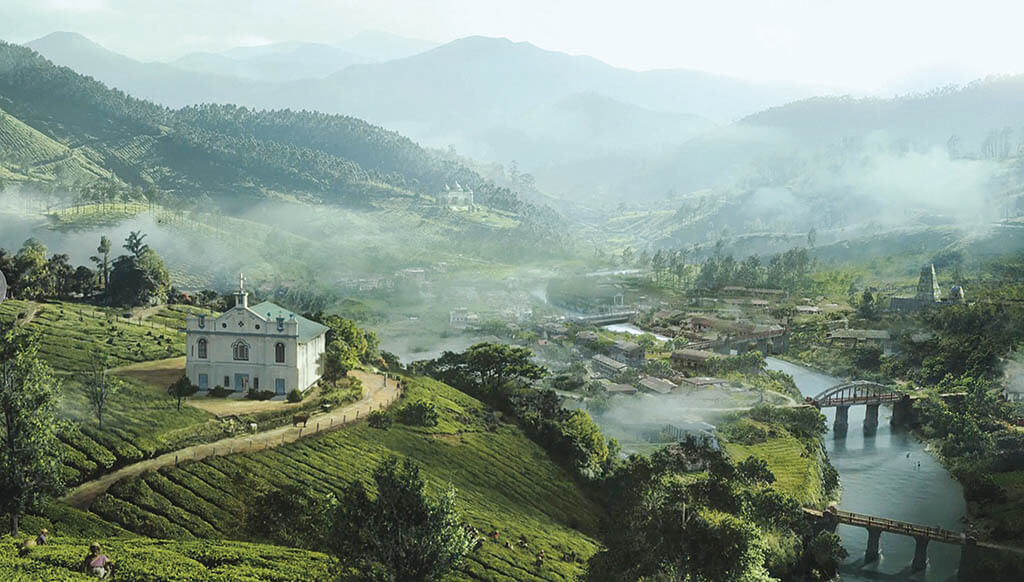
Matte painting taught Stromberg to understand what is needed to create something that fits the emotional narrative of each moment in a film like Life of Pi.
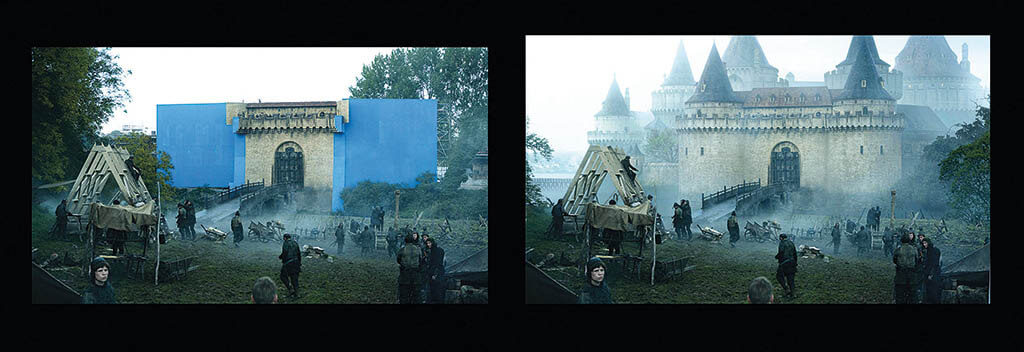
Upon establishing Digital Backlot, Stromberg got an opportunity to work on Game of Thrones.

Stromberg celebrates his first Oscar for Achievement in Art Direction on Avatar with Sigourney Weaver, Rick Carter and Kim Sinclair in 2010. (Photo: Dan MacMedan)
Creativity is born out of curiosity. “All artists want to know how things work. They pay attention to the small things in the world, such as how light reacts to objects, weathering, how plants and trees grow, and human behavior. When making a film or a painting, it’s never really finished, you just simply run out of questions to ask yourself.”
Currently, Stromberg is the co-founder of The Virtual Reality Company which is a content studio and production company for VR experiences. “During my years of design and creating the world of Pandora for Avatar, we created and invented many new technological enhancements, including for the first time a virtual camera that could do many of the same things that traditional cameras could do. For every scene in Avatar, we created a digital environment that could be explored, scouted and filmed, all virtually.” A major turning point was when Facebook purchased Oculus for $2 billion. “Oculus was nice enough to show me the tests that they had been working on that were compelling enough for Facebook to take notice. Once I saw them, I immediately started The Virtual Reality Company. At that time, everyone was talking about how it could be used for gaming, but I thought this could be a great narrative storytelling tool, and I then proceeded to create a four-minute test that I called ‘There.’ ‘There’ was a fantastical world where we envision a young girl who takes us through this surreal environment. I added dialogue and a symphonic score and suddenly realized that this was a completely new form of potential storytelling. Over several years, we created many different narrative experiences including The Martian, Raising a Rukus and The Jurassic World experience. In the AR world, we created a successful app called Follow Me Dragon, which became a top download in the app store.”
Unreal Engine and Unity are powerful tools. “As technology has improved over the years, I can see where an entire film could be created using gaming engine technology and AI, so like analog-to-digital, you either embrace it or get eaten by it. Currently, AI is being used in visual effects to enhance or replace prosthetics. As far as creating artwork, art influences art, and AI is a whole new generation of this concept. In the future, it’s the individual artists that will be burdened with copyrighting their work to lay claim to the unique design. It’s interesting that in the mid-’90s when computers first came onto the scene, people like myself were actually afraid that they would take all of our jobs as artists away, and what actually happened was that, for a while, the technicians tried to make art using Photoshop. But they soon found that you still need all of the life experiences and a keen understanding of how things work to make the technology really sing. I can only hope that AI is just another paintbrush in the artists’ toolkit.”
Emphasizes Stromberg, “Adaptation is a crucial element in deciding a career path. One thing that we can always be certain of is that technology will continue to race ahead. We just need to make sure that creativity, human behavior and emotions keep a steady pace alongside advancement in technology.” The biggest career challenge has nothing to do with creativity. “Finding balance in life while still pursuing your dreams is a difficult juggling act. And, in film, where time is your most valuable resource, it doesn’t allow for much else. Commercials and television series have all of the elements of a film with a shorter timeline, and that allows me the time to live my life in-between. I’m still interested in being a feature director and will take on another project, but it has to be the right story at the right time. In the inevitable end, everyone’s life is a movie, so make sure to direct yours properly, and when your life film is over, I hope it ends with a standing ovation! My advice for any challenge is to find balance.”